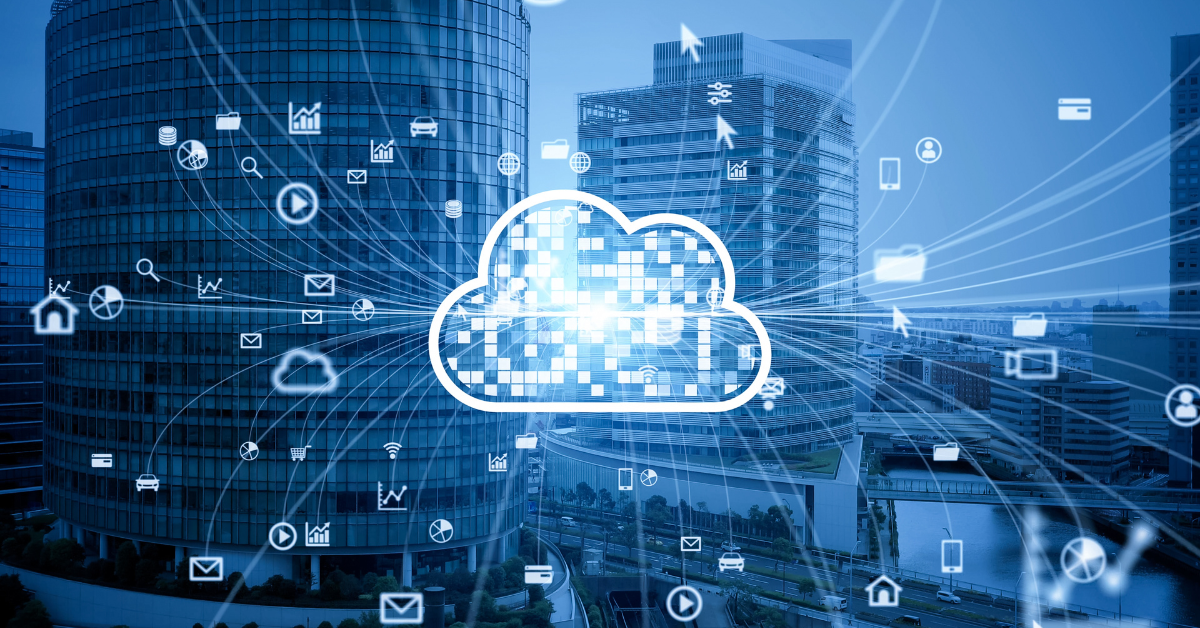In today’s digital world, cloud computing has become indispensable to businesses and organizations. It offers numerous benefits, including scalability, cost-efficiency, and ubiquitous access. However, with the rapid migration of sensitive data to the cloud, security concerns are more prominent than ever. We will delve into the essential steps and best practices to secure your data in cloud computing.
How to Secure Your Data in Cloud Computing

Cloud computing has become a game-changer for businesses, providing scalability, cost-effectiveness, and convenience. However, along with these advantages come security challenges. Protecting your data in the cloud requires a proactive and multi-layered approach. Here are the key steps to secure your data in cloud computing:
- Understand the Shared Responsibility Model: Embrace the shared responsibility model to determine your role and responsibilities in securing your data in the cloud.
- Classify Your Data: Properly classify your data based on its sensitivity and importance so that you can implement the right security measures.
- Implement Robust Encryption: Use encryption to safeguard your data from unauthorized access at rest and during transit.
- Leverage Multi-Factor Authentication: Add an extra layer of security by implementing multi-factor authentication for user logins.
- Strengthen Network Security: Fortify your network security to protect data as it travels between your network and the cloud.
- Utilize Cloud Access Security Broker (CASB): CASBs provide visibility and control over data and applications in the cloud.
- Implement Data Loss Prevention (DLP): Prevent unauthorized transmission of sensitive data outside the organization.
- Use Identity and Access Management (IAM): Manage user identities, access rights, and permissions within your cloud environment.
- Leverage Security Information and Event Management (SIEM): Proactively detect and respond to security incidents.
- Secure Cloud Backups: Isolate and secure cloud backups to prevent data loss due to ransomware or other threats.
- Conduct Regular Data Audits: Monitor data access, ensure compliance, and identify potential vulnerabilities through audits.
- Protect Your APIs: Safeguard your APIs and their endpoints to prevent unauthorized access to sensitive data.
- Implement Cloud Security Posture Management (CSPM): Continuously assess and improve your cloud security posture.
- Use Intrusion Detection and Prevention Systems (IDPS): Detect and prevent potential intrusions into your cloud environment.
- Develop an Incident Response Plan: Be prepared to address security breaches promptly and effectively.
- Opt for Cloud Security Certification: Choose providers with industry-standard certifications to ensure their commitment to security.
- Understand Data Sovereignty and Compliance: Comply with regional and international laws to ensure data sovereignty.
- Continuous Security Monitoring: Detect and respond to security threats in real time through continuous monitoring.
- Invest in Cloud Security Training: Educate your team about cloud security best practices and potential threats.
- Develop a Disaster Recovery Plan: Minimize data loss and ensure business continuity in case of a breach or disaster.
- Adopt Secure File Sharing Practices: Prevent data leakage while collaborating with external stakeholders.
- Implement Data Lifecycle Management: Safeguard data from creation to deletion through proper data lifecycle management.
- Explore Cloud Security Tools: Choose from various cloud security tools tailored to your organization’s needs.
- Stay Updated on Security Best Practices: Be proactive in staying updated on the latest security best practices and trends.
- Promote a Security-Centric Culture: Create a culture of security awareness among all employees to enhance overall defense against cyber threats.
Choosing the Right Cloud Service Provider
Selecting the most suitable cloud service provider is crucial in your pursuit of top-notch cloud data security. Before entrusting your data to a cloud provider, consider the following factors:
-
Security Measures and Certifications
Reputable cloud service providers prioritize data security and invest significantly in state-of-the-art security measures. They comply with industry standards such as ISO 27001, SOC 2, and PCI DSS, ensuring your data is handled with utmost care.
-
Data Center Locations and Compliance
Verify that the cloud provider’s data centers adhere to strict physical security protocols and are strategically located to comply with relevant data privacy regulations.
-
Transparency and Accountability
Choose a cloud provider that is transparent about its security practices and offers comprehensive documentation on data handling and incident response procedures.
-
Service-Level Agreements (SLAs)
Carefully review SLAs to understand the cloud provider’s commitment to uptime, data availability, and disaster recovery.
- Ongoing Monitoring and Vigilance
Even with robust security measures, continuous monitoring and vigilance are paramount. Implement regular security audits, penetration testing, and vulnerability assessments to proactively identify and address potential weaknesses.
Understanding the Significance of Cloud Data Security

It is imperative to comprehend the significance of cloud data security. Cloud computing allows users to store and access data remotely over the internet, providing flexibility and accessibility like never before. However, this also exposes your data to threats, including unauthorized access, breaches, and cyberattacks.
-
Data Encryption: Shielding Your Information
Data encryption is a formidable fortress, ensuring your data remains secure from prying eyes. You add an extra layer of protection by encrypting your data, both in transit and at rest. Encryption transforms your data into unreadable code, which can only be deciphered with the correct encryption key. Implementing industry-standard encryption algorithms such as AES (Advanced Encryption Standard) will thwart unauthorized access attempts and ensure data integrity.
-
Robust Authentication Mechanisms
In the realm of cloud data security, strong authentication mechanisms are non-negotiable. Enforcing multi-factor authentication (MFA) ensures that only authorized users can access your sensitive information. MFA combines multiple forms of identification, such as passwords, biometrics, or one-time passwords, drastically reducing the risk of unauthorized access and enhancing your overall data protection.
-
Implementing Effective Identity and Access Management (IAM)
A well-defined Identity and Access Management (IAM) strategy is vital to control who can access specific resources within your cloud environment. By following the principle of least privilege, where users are granted only the necessary permissions, you minimize potential attack surfaces. Regularly review and update access privileges to align with personnel changes, reducing the risk of data exposure due to outdated credentials.
-
Regular Data Backups: An Insurance Policy for Your Data

Regardless of your preventive measures, there is always a chance of unforeseen incidents. Therefore, it is essential to establish regular data backups to safeguard against data loss. Backups should be stored in a separate, secure location, ensuring business continuity even in the face of ransomware attacks, hardware failures, or natural disasters.
-
Network Security: Building the First Line of Defense
A well-configured network security infrastructure serves as the first line of defense against potential cyber threats. Employing firewalls and network monitoring tools lets you control incoming and outgoing traffic, blocking malicious attempts and safeguarding your data from unauthorized access.
Key Points
- Understand the shared responsibility model in cloud computing.
- Classify data based on sensitivity and encrypt it at rest and in transit.
- Assess cloud service providers’ security practices and compliance.
- Integrate tightly with cloud applications through APIs and prioritize user experience.
- Enforce DLP policies and secure collaboration practices within the cloud environment.
- Leverage IAM, SSO, and CSPM solutions for complete data visibility and control.
FAQs
Q1: Is data as secure in the cloud as in a traditional environment?
Yes and no. While cloud service providers invest heavily in securing their infrastructure, your data and applications’ security largely depends on your security measures. Adopting robust encryption, access controls, and continuous monitoring are essential for a secure cloud environment.
Q2: What are the critical actions for keeping data safe in the cloud?
To ensure data security in the cloud, consider the following critical actions:
- Document overall cloud security requirements.
- Specify secure data management goals.
- Establish encryption key management practices.
- Evaluate cloud service providers rationally.
- Properly classify data based on sensitivity.
Q3: Who is responsible for your data if it’s stolen while in the cloud?
Ultimately, you, the customer, are responsible for your data in the cloud. While cloud service providers offer robust security measures, securing your data lies with your organization. Therefore, it is crucial to implement robust security practices to protect your valuable data.
Conclusion
Securing data in cloud computing is of paramount importance in the digital age. By understanding the shared responsibility model and adopting the best practices mentioned above, organizations can create a safer cloud environment for their data and applications. Safeguarding your data is a collective effort, and continuous monitoring and improvement are key to ensuring robust cloud security.
